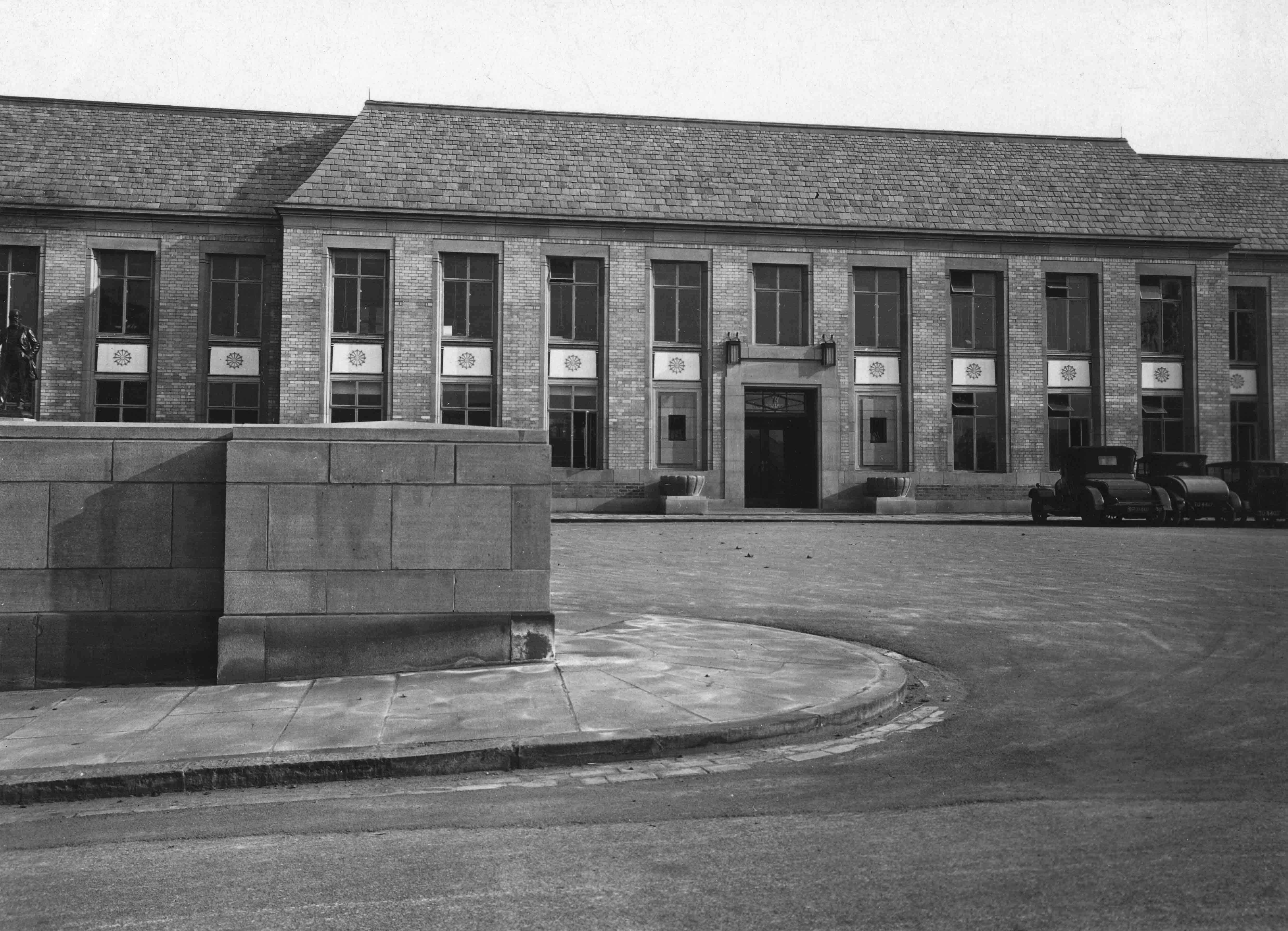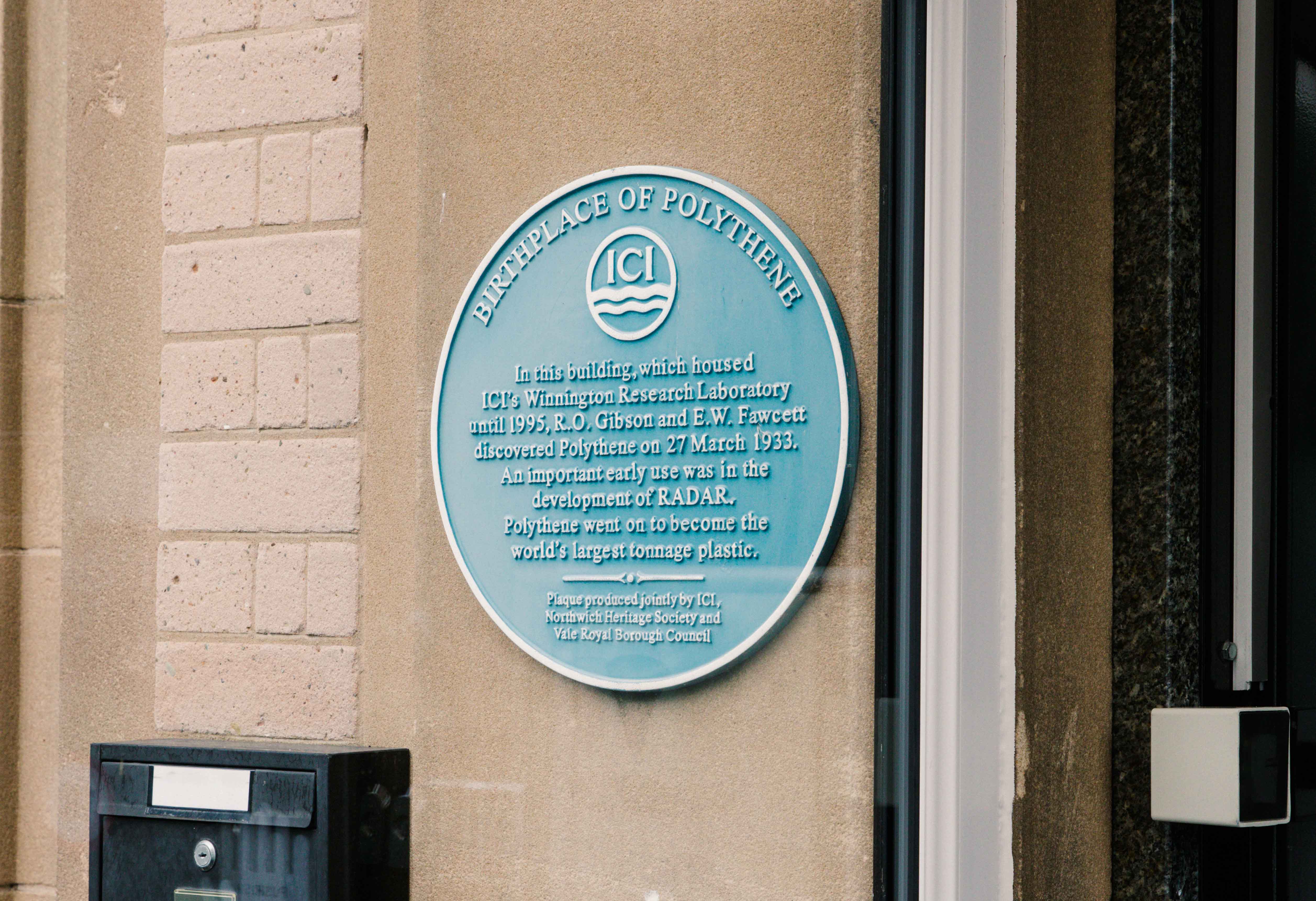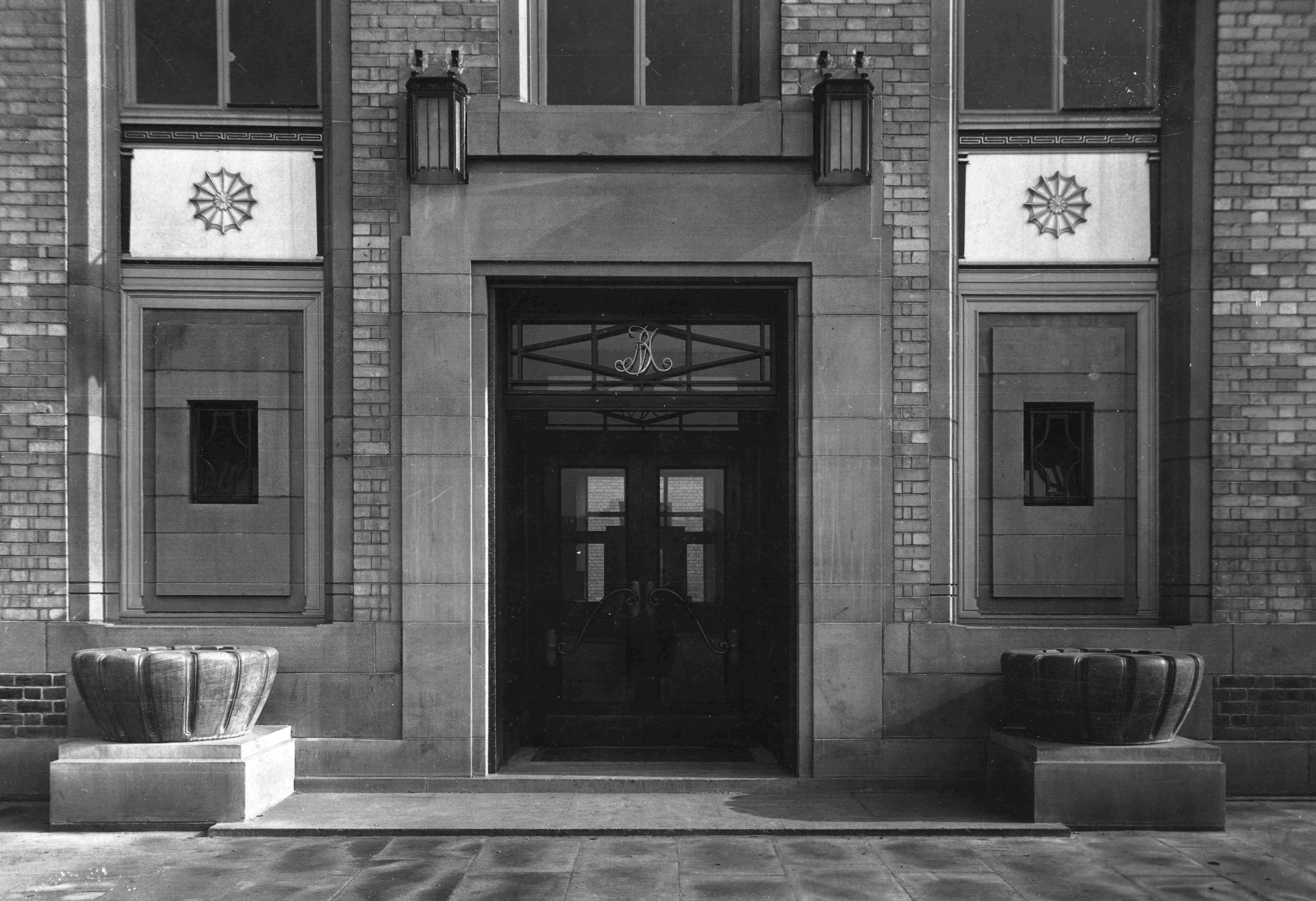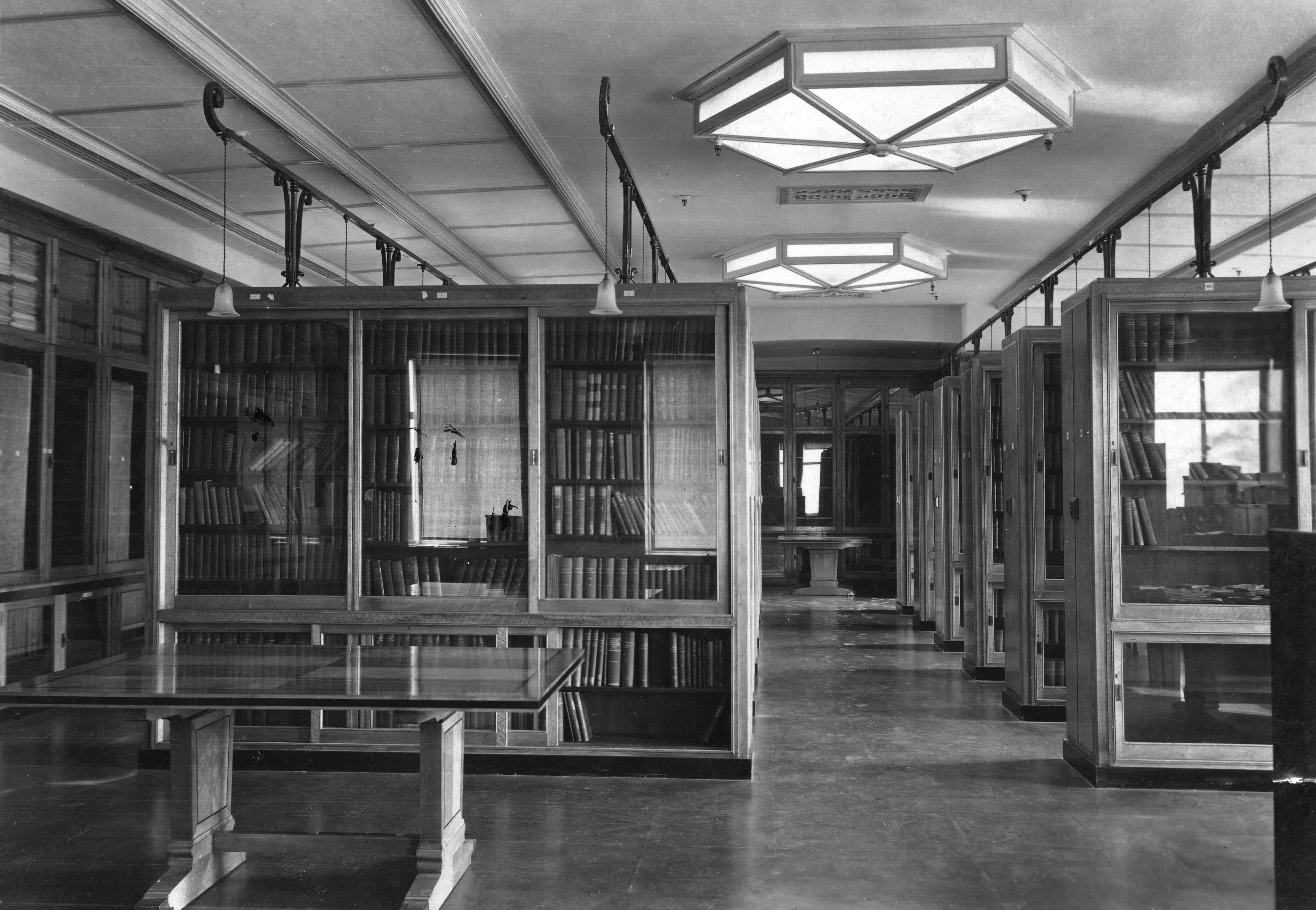
Read About Our History
The Storied Past of Our Building
Welcome to our unique and historic space! Did you know that our building has a fascinating story that ties into both scientific breakthroughs and world history? You might have noticed the blue plaque to the left of the entrance hall. It’s there for a reason—our building was home to a major discovery that changed the world as we know it.
A Hub for Scientific Discovery
From 1933 to 1995, this building housed the ICI Whittington Research Laboratories, where two brilliant chemists, R.O. Gibson and E.W. Fawcett, stumbled upon a game-changing discovery—Polythene (also known as polyethylene), which has since become the most widely used plastic in the world.
On March 27th, 1933, while developing radar systems, Gibson and Fawcett set off a reaction between ethylene and benzaldehyde. To their surprise, they found a white, waxy substance forming in their experiment—it looked like plastic, but it was something entirely new. After some investigation, they realized they had accidentally discovered polyethylene, a lightweight yet incredibly durable material that would soon become essential in modern life.
How Polyethylene Changed the World
Initially used for military applications during World War II, polyethylene played a crucial role in radar technology by providing lightweight insulation for cables. This innovation helped reduce the weight of radar equipment on airplanes, giving Allied forces a strategic advantage. In fact, polyethylene’s importance was such a secret during the war that its use was classified information.
But after the war, polyethylene didn’t remain a secret for long. It became a hit with consumers and industries alike. By the 1950s, it was being used in everything from packaging to household goods, and today it is the most produced plastic in the world, with over 90 million metric tons manufactured each year!
Thanks to its excellent resistance to moisture, chemicals, and electrical currents, polyethylene can be found in countless everyday products, from containers and pipes to electronics and packaging. It’s a versatile, essential material that continues to evolve, making our lives easier and more efficient.
Before ICI: The Brunner, Mond & Co. Legacy
The history of our building goes back even further ... Before it became ICI’s research hub, it was part of the Brunner, Mond & Co., a company founded in 1873 by John Tomlinson Brunner and Ludwig Mond. This company was instrumental in the production of soda ash, a key ingredient used in the chemical industry.
The founders chose Northwich as their base due to the area’s rich salt deposits, essential for soda ash production. Their company grew rapidly, acquiring other chemical firms and expanding into new product lines. By the early 1900s, Brunner, Mond & Co. was a powerhouse, even playing a significant role during World War I by producing ammonium nitrate for munitions.
In 1926, the company merged with others to form Imperial Chemical Industries (ICI), and the rest, as they say, is history!
A Legacy of Innovation
Today, our building stands as a reminder of the spirit of innovation and discovery that shaped the modern world. From the accidental creation of polyethylene to its vital role in world history, this space has witnessed incredible advancements that continue to influence science, industry, and everyday life.
So next time you step inside, take a moment to appreciate the legacy of groundbreaking research and ingenuity that makes this building more than just our Sauna, it’s a part of history!
Archive Images

You must be 18 and over to attend. We operate a
challenge 25 policy so make sure you have ID on you.




